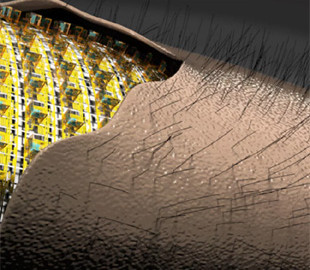
Scientists from Tsinghua University in China have achieved a breakthrough in artificial skin technology, developing the world's first “electronic skin” with bionic three-dimensional architecture. This innovation aims to imitate the amazing capabilities of human skin to perceive touch.
The design imitates the spatial distribution of mechanoreceptors in human skin
Human skin is covered with a dense network of specialized cells called mechanoreceptors. These receptors are located in three dimensions, allowing us to distinguish different sensations such as pressure, shear (friction) and tension with exceptional accuracy. Modern electronic skin technology is unable to reproduce this nuanced and simultaneous perception on a physical level.
Inspired by the brilliance of nature, Professor Zhang Yihui's research team from Tsinghua University has developed a new electronic skin design that incorporates three-dimensional architecture. This design mimics the spatial distribution of mechanoreceptors in human skin, such as Merkel cells and Ruffini corpuscles. The result is a device capable of independently measuring pressure, friction and deformation at the physical level – a significant step forward in artificial touch technology.
This bionic electronic skin is carefully crafted from three distinct layers that mirror the structure of human skin:
- Epidermis: an outer layer that resembles the surface texture of human skin.
- Derma: the middle layer, where most of the sensors and circuits are located. This layer has a unique frame structure of eight arms, which houses the force measurement unit. This highly sensitive device, located close to the surface, effectively detects external forces.
- Subcutaneous tissue: the lower layer that replicates the structure of the subcutaneous tissue of human skin.
By combining this three-dimensional electronic shell with advanced deep machine learning algorithms, the research team achieved a remarkable result. Their creation can not only perceive touch, but also analyze the object's modulus (stiffness) and local principal curvature (shape) through simple contact.
This is a revolutionary research called "Three-dimensional electronic skin architecture that mimics human mechanical sensations» was published in the prestigious scientific journal Science on May 30, 2024. The development has huge potential for a variety of applications, including prosthetics that offer a more natural sense of touch for amputees and robots with enhanced tactile capabilities.

